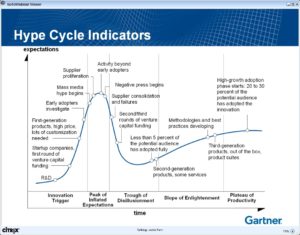I can’t believe that it’s been a year since the last Technicity conference: a free conference hosted by IT World Canada, and sponsored this year by McAfee and Microsoft. Last year, the focus was on crowdfunding including some lessons from crowdfunding in the UK and a panel on legalizing equity crowdfunding; this year, it’s about cybersecurity. There’s a strong presence from the city of Toronto here, including an opening address from Councillor Gary Crawford, and the participation of the city’s CIO Rob Meikle on a panel; plus provincial government participation with Blair Poetschke, director of the international trade branch for the Ontario Ministry of Economic Development, and Stephen McCammon, legal counsel at the Office of the Ontario Information and Privacy Commissioner.
Ontario is a hotbed for technology development in Canada, with a large software development community in and around Toronto. Toronto has also been a relatively early provider of open government data and publish a catalogue of online data, which in turn fosters innovation. The G8 countries have now signed on to a full open data initiative, and this is a good thing: we, as taxpayers, pay to have this information collected, and as long as it doesn’t violate anyone’s privacy, it should be freely available to us. Although this conference isn’t about open data, an environment of freely-available government data is a good place to start talking about security and privacy.
It wouldn’t be a Canadian event about cybersecurity without a keynote by Michael Geist, and he delivered on the topic of “The Internet: Friend or Foe?” (a question that many of us ask daily). Although he started with the answer “friend”, he also immediately addressed the privacy and security concerns that arise from the recent news that the NSA has hacked pretty much everyone on the planet, and the ramifications of Edward Snowden’s revelations: it’s not just metadata (as if that weren’t bad enough), and there are a lot of governments and companies complicit in this, including ours. You can read more about this from a Canadian security perspective on Geist’s excellent blog; as a law professor and the Canada Research Chair on internet and e-commerce law, he has a pretty good perspective on this. Geist and others think that what has come out from Snowden’s information is just the tip of the iceberg, and that we have many more horror stories to come.
A big challenge in this environment is with cloud computing, specifically any cloud storage that is resident in the US or owned by a US company: many companies are now calling for local (and locally-owned, therefore out of the grasp of the US Patriot Act) storage from their cloud providers. It’s a small consolation that I’ve been asking about locally-hosted — or at least, non-US hosted — BPM cloud providers for a number of years now; finally, the general business public has woken up to the potential surveillance dangers.
Encryption is becoming a much more visible issue, whereas previously it was a purely technical concern: cloud providers (Google, Microsoft and Twitter, to name three) are ramping up encryption of their traffic in what is rapidly becoming a technology arms race against our own governments. Similarly, businesses and individuals are demanding greater transparency from cloud providers with respect to the disclosures that they are making to government intelligence agencies. Many international bodies are calling for control of internet domains and standards to be wrested away from US-based organizations, since these have been shown to include a variety of government intelligence and corporate sock puppets.
In Canada, our conservative government is busy sucking up to the US government, so we have seen a number of privacy-busting attempts at an online surveillance bill by positioning “lawful access” (i.e., the government can access all of your information without explicit permission) as “protecting our children” by tossing in a bit about cyberbullying. Geist discussed some of the dangers of this bill (Bill C-13, just introduced last week) in a post yesterday, specifically that companies have immunity against prosecution for violating our privacy and information security if they hand that information over to the government under the definitions of this bill.
He finished up with a look at Canada’s anti-spam law that is coming into effect shortly; this includes making communication from businesses opt-in rather than opt-out, and also requiring consent before installing computer programs in the course of a commercial activity.
It was great to see Geist in person, he’s a great speaker, full of passion and knowledge about his subject. As always, he inspires me to help make Canada a better place for our online activities.

